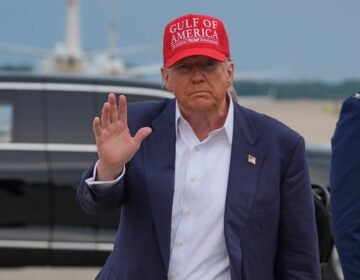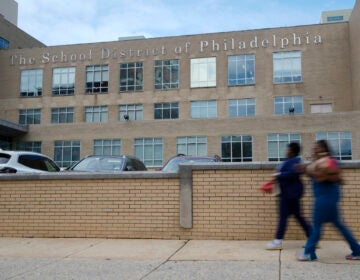How will cigarette tax hike affect Philly vs. rest of state?

Pennsylvania’s state cigarette tax jumps from $1.60 to $2.60 per pack Monday. That’s on top of a $2-per-pack tax levied by Philadelphia, which uses money from its city cigarette tax to fund Philly schools.
As soon as state lawmakers started mulling a change to Pennsylvania’s cigarette tax, school district officials in Philadelphia began to worry.
Last year, the city collected about $58 million from its city cigarette tax. If the new state tax caused fewer Philadelphians to smoke — or convinced more of them to purchase their smokes illegally — the city’s cigarette tax would become less lucrative. City and district officials estimated that the state’s $1-a-pack increase would cost the school district between $4 million and $6 million, or about 10 percent of what it collects annually from the city tax.
To allay those concerns, state lawmakers tucked a “hold-harmless” clause into the state budget. If the city’s cigarette tax generates less than $58 million next year, the state will make up the difference, according to the clause. Or to put it numerical terms, if the city’s tax produces, say, $48 million next year, the state will pay Philly $10 million.
“If there is a reduction in consumption that leads to a reduction in collections, the district will be made whole by the state,” said Rob Dubow, Philadelphia’s director of finance.
State guarantee could expire
No one knows how long the state Legislature will maintain the hold-harmless clause, and so it’s worth asking how the changes in the state cigarette tax might change consumption habits in Philadelphia, given that cigarette prices in the city — at more than $10 a pack — are already higher.
In general, cigarette taxes make people less likely to buy cigarettes. Oft-cited numbers from the Congressional Budget Office suggest that a 10 percent increase in the cigarette tax decreases smoking in adults by 3 to 7 percent. The effect is even greater on smokers under 18.
Those numbers, however, don’t account for the fact that cigarette prices vary from municipality to municipality. Researchers are just now trying to grapple with whether cigarette taxes prompt larger or smaller changes in consumer habits based on the overall price of cigarettes. Or to put that in a local context: Will the change in the state’s cigarette tax have a different effect in Philadelphia than it will elsewhere around the state?
Two recent reports from the National Bureau of Economic Research tackle versions of that question. Their conclusion is that Pennsylvania’s statewide tax increase probably won’t change Philadelphians’ attitudes toward smoking any more than it will their suburban counterparts. But the logic behind that conclusion is interesting.
On the whole, the research finds that new cigarette taxes have much greater impact on consumer habits in places where the price of cigarettes is higher. One of the studies, for instance, found that a 10 percent rise in cigarette prices decreased consumption by 5.6 percent when cigarettes cost $9. In places where cigarettes cost just $3 a pack, a 10 percent hike prompted only a 1.7 percent decline in overall consumption.
The broad claim here is that cities with high cigarette prices — such as Philadelphia — are much more sensitive to tax hikes. In these cases, the tax bumps create far greater health benefits, but deliver proportionately less money to government coffers.
Or, as one of the studies put it:
“For a tax increase that raises cigarette price by 10 percent, states that have cigarette taxes/prices above the national average will generate less additional revenue, but have a greater public health impact compared to states that have cigarette taxes/prices below the national average, which will collect more additional revenue, but have less public health benefit.”
One reason for this is pretty simple. A 10 percent bump in the price of cigarettes would be a larger sum of money in places where the price of cigarettes is higher. In a place where cigarettes cost $2 a pack, increasing the price by 10 percent would only add 20 cents to the cost. In a place where cigarettes cost $10 a pack, increasing the price by 10 percent would add an entire dollar — or sticker shock.
A matter of percentages
Of course all that analysis assumes the government is increasing taxes on a percentage basis. As careful observers will note, Pennsylvania’s tax increase is a lump-sum increase.
By increasing the cigarette tax by $1 across the state, lawmakers are raising the total tax burden from $2.61 per pack to $3.61 per pack (a 27.7 percent increase) in most municipalities. In Philadelphia, however, the tax burden per pack is going from $4.61 per pack to $5.61 per pack (a 17.8 percent increase).
This creates an interesting quandary. All else being equal, Philadelphia should be more sensitive to a cigarette tax hike. In this case, though, cigarette prices in Philadelphia are going up by a smaller percentage than in other Pennsylvania cities.
Tom Farley, Philadelphia’s health commissioner, actually believes the effect on smoking cessation will be smaller in the city because the change won’t seem as dramatic to Philly residents.
“If you have a $10 item that changes to $11, that feels like a smaller difference than if you have a $5 item that goes to $6,” he said. “It’s the percentage increase that we tend to notice and that is what has an impact on people considering buying the next pack of cigarettes or considering quitting.”
Still, the city hopes the new statewide tax will produce some change in consumer behavior, and officials urge those who want to quit to dial 1-800-QUITNOW for assistance.
All the above evidence suggests opposing forces are at play here. Philadelphia consumers should react more strongly than their suburban neighbors to a percentage increase in the cost of cigarettes. But in this case, the percentage increase in Philadelphia is actually smaller than it is outside the city.
Plus, since Philly raised its cigarette tax in the past, city smokers might have already given up the habit, reducing the number of potential quitters in the city.
“In places where the prices are higher, you’re going to have already removed a number of smokers that would already be smoking from your sample,” said Michael Pesko, co-author on the new research and assistant professor of health care policy and research at Weill Cornell Medical College. “So you’re still going to see the same percent decline in smoking participation or in the intensity of smokers in terms of how many cigarettes they consumer, but it will just be from a lower base.”
Frank Chaloupka, professor of economics at the University of Illinois at Chicago, said all these conditions essentially cancel each other out. The end result? A flat tax increase like the one in Pennsylvania will have about the same health benefits in Philadelphia as it does in the ‘burbs.
“The $1 increase in Pennsylvania should result in the same percentage declines in smoking in Philadelphia as in the rest of the state,” wrote Chaloupka in an e-mail.
Don’t expect the new Pennsylvania tax to dramatically alter the calculus when it comes to smoking in Philadelphia. And as long as the state Legislature doesn’t remove the hold-harmless provision granted this summer, don’t expect it to dramatically alter the School District of Philadelphia’s bottom line, either.
WHYY is your source for fact-based, in-depth journalism and information. As a nonprofit organization, we rely on financial support from readers like you. Please give today.





